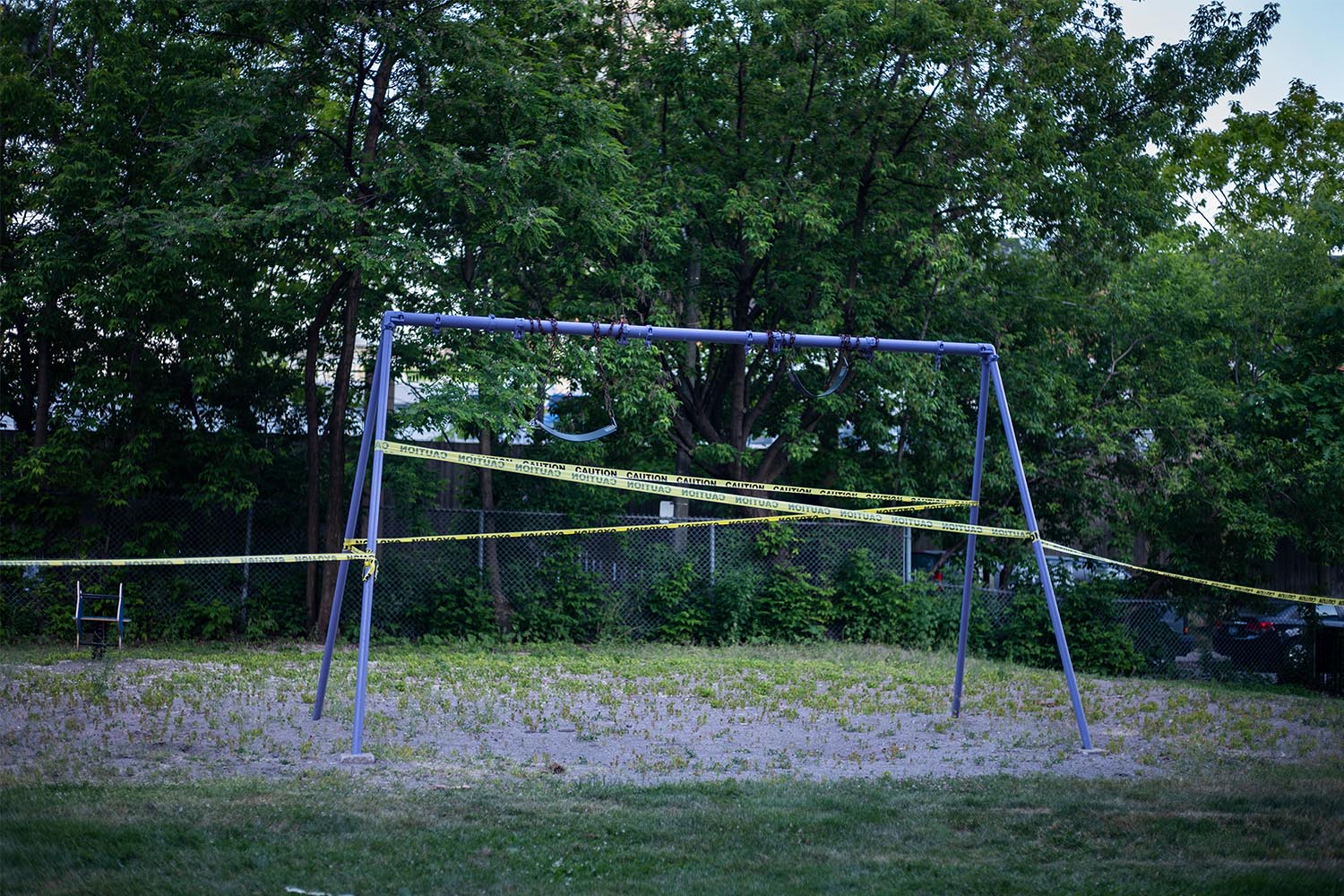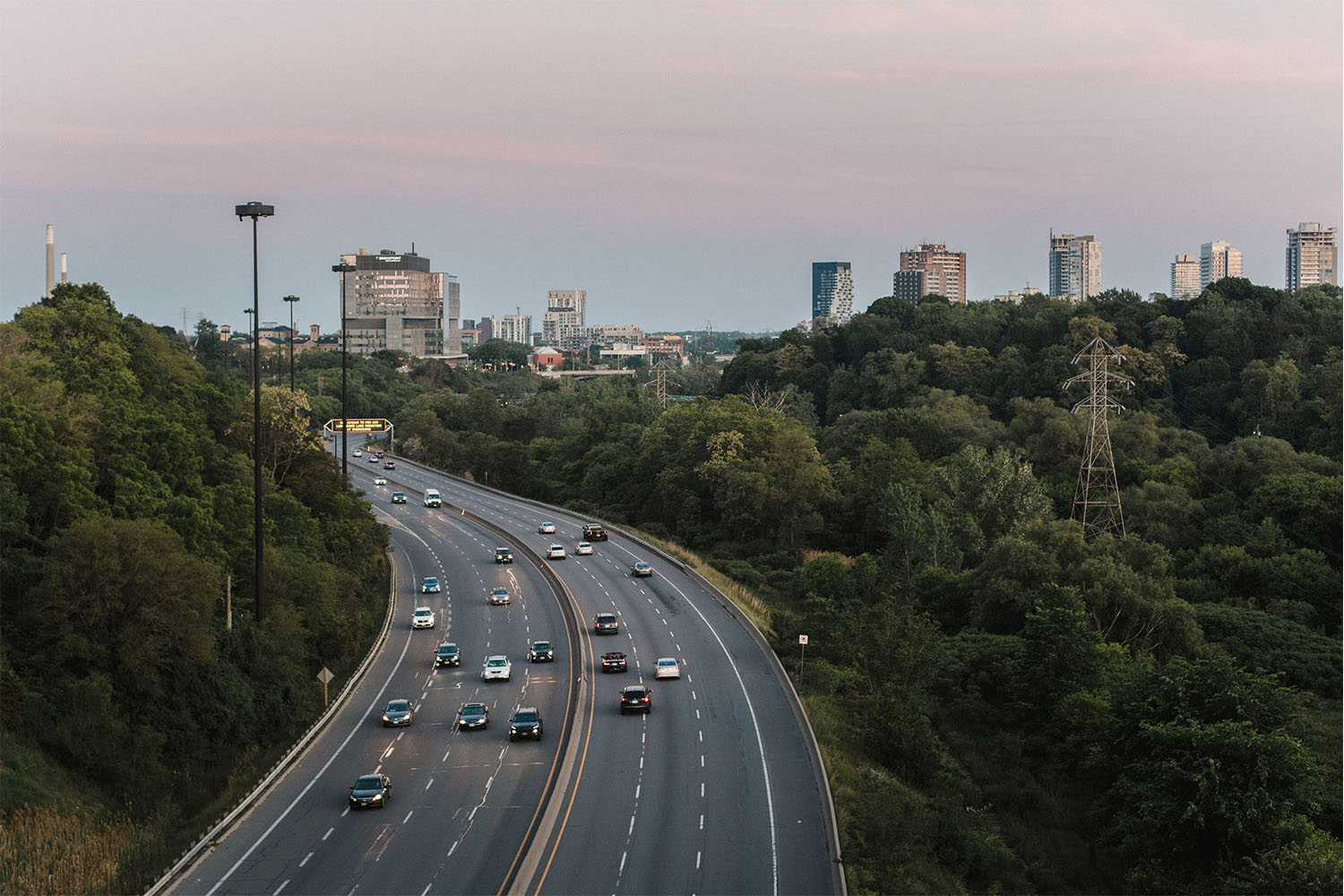

At the height of stay-at-home orders in late March, when public transit ridership had dropped to as low as 14 percent of pre-pandemic levels, some residents in Toronto’s northwest took to social media to complain about overcrowding at TTC stops and on vehicles. Buses which were supposed to carry no more than 15 passengers were packed elbow-to-elbow with 50, 60, sometimes 70 people, mostly visible minorities. One of those buses, the 35 Jane, was the busiest in all of Toronto. In a heat map produced by the TTC showing overcrowded surface routes, the 35 Jane lit up like a glow stick.
When urban planner André Darmanin took the route in May, it was the first time he’d taken transit since before the pandemic. “It was standing room only, even with the seat spacing,” he recalls. Even though it was a Saturday, the visible signs of people commuting to and from work were all around him—a person in a No Frills shirt, others in work boots and construction gear. “There was a lot of yelling, complaining to the driver about the lack of social distancing on the bus.”
With the city’s recent release of COVID-19 neighbourhood-level data, we now know that the 35 Jane cuts through many of the hardest hit areas in the city. Setting aside the outbreaks in health care institutions and looking at only community cases (the city calls them “sporadic” cases), a cluster of racialized, working class neighbourhoods in Toronto’s northwest has become the city’s COVID-19 epicentre.
Heading north from the train tracks just above Dundas, the 35 Jane first arrives in Rockcliffe-Smythe, a working-class neighbourhood with two and a half times the city’s median rate of sporadic cases. Immediately north is Mount Dennis, a low-income, predominantly Black neighbourhood: three times the city’s median. By the time the bus reaches the upper end of the city—Weston, Downsview-Roding-CFB, Glenfield-Jane Heights, and Black Creek—rates climb to five times the city’s median. When compared to some of the best-off neighbourhoods, a resident of Weston or Black Creek is 23 times more likely to get COVID-19 than someone living in The Beaches.
The COVID numbers are sobering but not surprising given that they precisely match the outlines of the broader inequalities of the city, where race, class, and vulnerability to illness come together. What’s striking is that these socio-spatial factors, which normally shape health outcomes at an imperceptible pace, are now doing so overnight.
This pandemic feels more like a natural disaster, rapidly engulfing an entire region but only devastating areas where race and class divisions are most pronounced.
The story of COVID-19 in Toronto is actually the story of two pandemics laid atop one another. The first pandemic feels a lot like SARS. The tragic situation in long-term care homes, in particular, bears resemblance to the 2003 outbreak, when the majority of deaths in Toronto were confined to health care institutions. The second pandemic, on the other hand, feels more like a natural disaster, rapidly engulfing an entire region but only devastating areas where race and class divisions are most pronounced.
We’ve seen this familiar story before—during Hurricane Katrina, Andrew, the Chicago heat wave of 1995, and just about every natural disaster that comes into contact with racial and economic inequality. In the Miami area during Hurricane Andrew, Black residents were two-thirds less likely to evacuate than whites. When Katrina slammed into New Orleans in the early hours of August 29, 2005, most of the city’s 460,000 inhabitants had already evacuated. After the levees broke, we saw desperate people clinging to whatever personal belongings they still had, stranded on rooftops in the Lower Ninth Ward. Analysis later confirmed what we all saw on the rolling news coverage: 80 percent of people stranded on rooftops were Black. “Didn’t these residents get the same warning to evacuate as everybody else?” the line of enquiry usually went.
At the Superdome, research showed that most were low-income, with close to 40 percent making below $10,000 US a year. The majority of people there said they had heard the evacuation order, but chose to ignore it for a whole host of reasons: they didn’t own a car, didn’t have family elsewhere to evacuate to, couldn’t afford to lose time from work, had too many dependents to take care of. Retreating to a safe place in the face of danger was a luxury not everyone could afford. And centuries of inequality had ensured that many of those least likely to afford it were Black.
In Toronto during this pandemic, just as in New Orleans, we’ve seen that public health instructions are only as successful as citizens’ ability to follow them. Two full weeks into the pandemic, the TTC sent out the following tweet on March 31: “35 Jane: Your route has been identified as very busy before 7 a.m. on weekdays. Unless your trip is essential, please consider travelling after 7:30 a.m. to encourage physical distancing.” They also requested riders to practise physical distancing at bus stops and on vehicles. Of course, no one listened. How could they? If you’re a shift worker who leaves for work between five and seven in the morning, which a third of people in these neighbourhoods do on a regular basis, you don’t have a choice in the same way that people in the Lower Ninth Ward didn’t have a choice to evacuate to a safer location. The TTC, to its credit, announced the very next day that six extra buses would be added to the route.
But this second pandemic isn’t about public transit, per se. Once you solve the bus problem, you quickly realize that people still have to congregate in warehouses, work the cash registers, and clean emergency rooms while the rest of us work from the safety of our bubbles. People who study natural disasters call this social vulnerability—the conditions that make certain communities more susceptible to disasters than others. And it has everything to do with race, class, and economic opportunity.
Like SARS, the first pandemic will have its day of reckoning. When the dust finally settles on the long-term care situation, government commissions will investigate, blame will be assigned, and heads will roll. Addressing the second pandemic will be harder. The lesson of a long history of natural disasters that exploit communities at the margins of a city sadly shows that lasting change is nearly always promised but rarely realized. In order to prevent the next natural disaster—which might be a second wave of COVID or something entirely different—we need to make fundamental changes to our neighbourhoods, and not just the surface routes that run through them.








